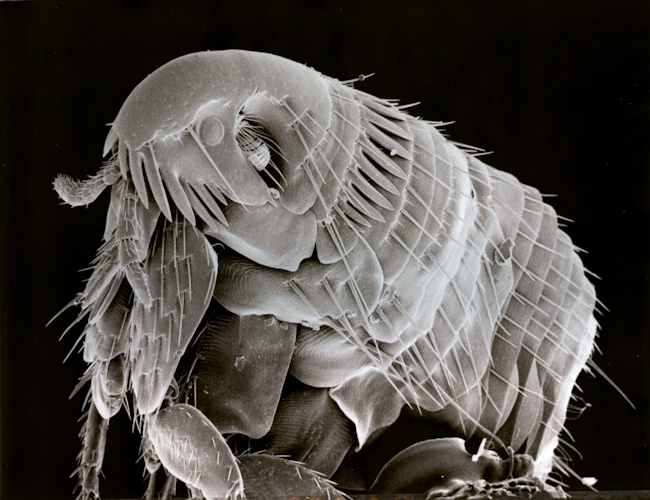Ask anyone who’s dealt with a major infestation and they’ll agree: fleas more than a nuissance; they can turn your world upside down by making you and your family’s lives miserable. The constant biting and scratching can drive you crazy. But picking and killing fleas one by one won’t work, so how are you supposed to solve your flea problem?
Step #1) Treat Your Home
The first step in solving your flea problem is to treat your home. Several studies have found that the majority of a flea infestation (up to 95%) is comprised of eggs, whereas only 5% are adults. So if you notice 10 adult fleas jumping around your carpet, there’s probably at least 100 eggs waiting to hatch.
Rather than spraying harsh pesticide chemicals throughout your home, it’s recommended that you use a combination of temperature control, humidity control, and vacuuming to eliminate fleas. Dropping the thermostat to 70 degrees Fahrenheit or below, reducing the relative humidity to 50% or below, and keeping your carpet and floors vacuumed can make a world of difference in your battle against fleas.
Step #2) Treat Your Pets
The second step is to treat your pets. If you are currently experiencing a flea infestation inside your home, chances are your pets are covered in these blood-sucking parasites. Fleas feast on the blood of dogs, cats and other mammals (including humans); therefore, taking the host out of the equation will cut off the flea’s source of food.
Apply a once-a-month flea medicine — either an insect growth regulator or insect grow inhibitor — to your pet. FrontLine Plus and Advantage are both excellent products that will keep both fleas and ticks away from your pets. Avoid the use of flea collars or “spot treatment” sprays, as these products have little effectiveness against the actual flea population. And to make matters worse, many flea collars and spot sprays are highly toxic to both humans and pets.
Step #3) Treat Your Yard
The third and final step in solving your flea problem is to treat your yard. Why should you treat your yard? Well, if there’s fleas inside your home, there’s probably fleas in your yard as well.
Treat your yard for fleas by keeping the grass mowed, weeds and brush removed, and applying a chemical pesticide around the perimeter of your home. A residual powder pesticide is recommended for flea treatment, because it tends to last for several weeks at minimum.

